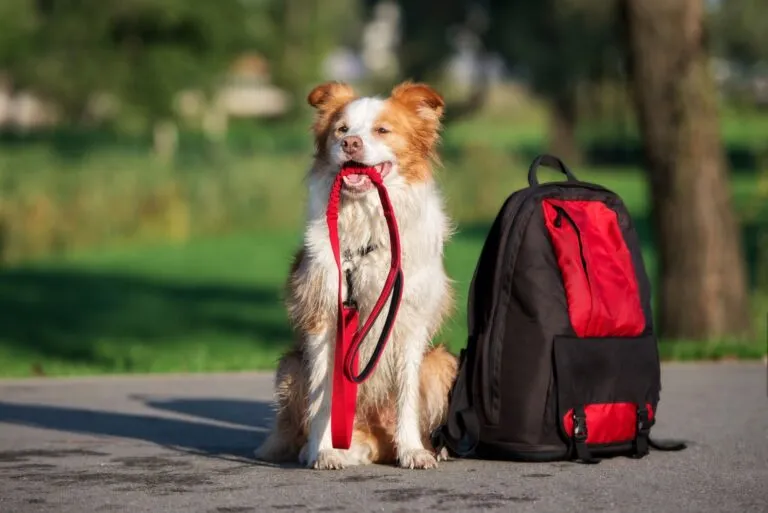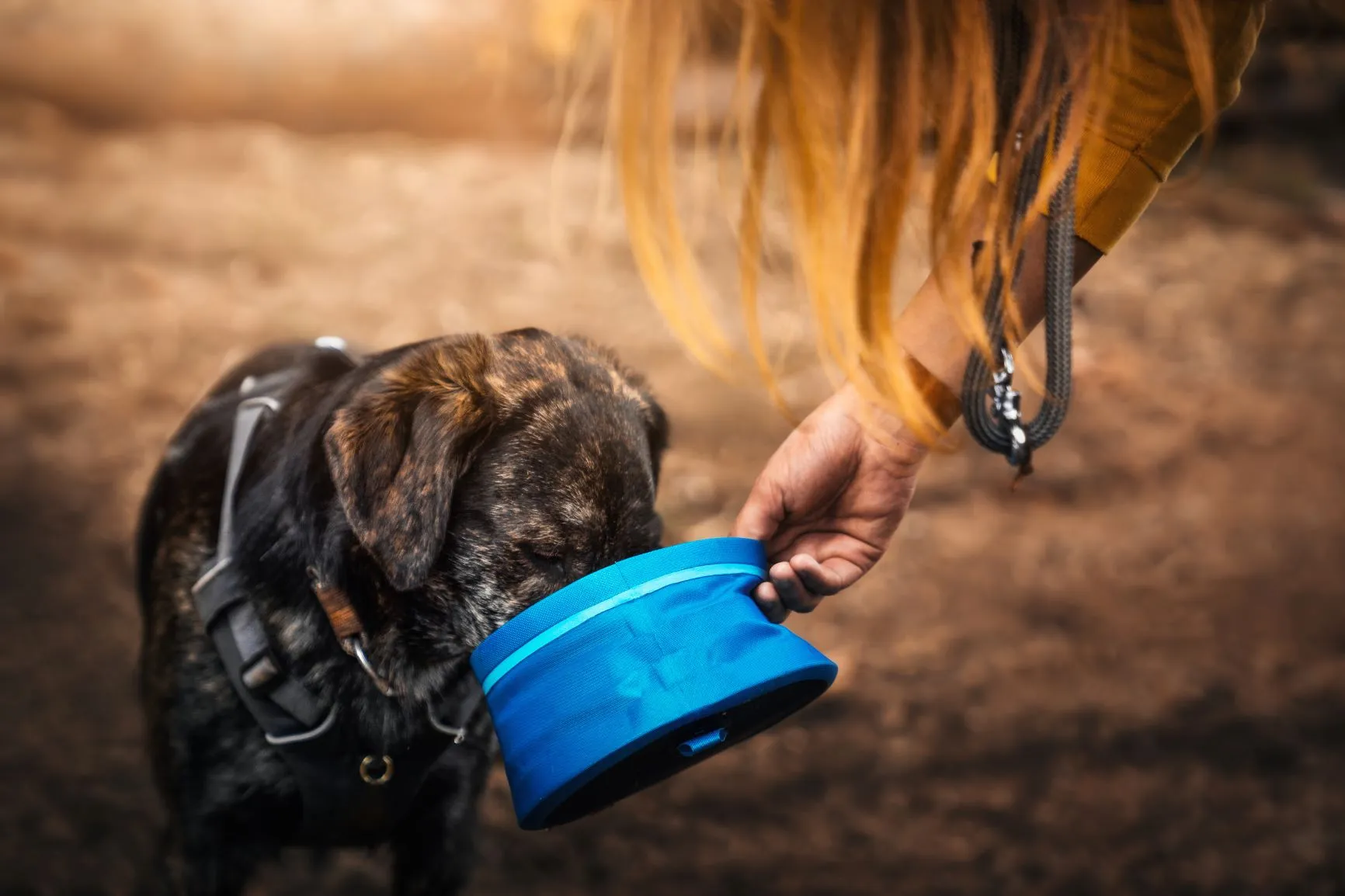Hiking with Dogs – Everyday Adventures
Be it short hikes in the surrounding area, day trips at the weekend or whole hiking holidays with your dog, hiking is a great hobby for human-canine teams!
Be it short hikes in the surrounding area, day trips at the weekend or whole hiking holidays with your dog, hiking is a great hobby for human-canine teams!

© otsphoto / stock.adobe.com
You need the right equipment for hiking with dogs.
Almost every healthy adult dog can embark upon hiking adventures with you. However, your dog should already have some experience of hiking in order to be able to tackle longer tours independently.
So if you’re planning a day trip, you should have already mastered a few shorter hikes with your dog in the local area. As well, hiking is only possible to a limited extent with the following dogs:
Puppies shouldn’t walk long distances, so hikes of several kilometres are out of the question for them. Hiking fans can take their little dog with them in a special dog rucksack though and occasionally let them walk a few smaller stretches.
Young dogs can gradually be introduced to hiking. From one year of age, hikes of five kilometres or more are generally possible. With large breeds like Great Danes, you should first ask your vet for their assessment.
Breeds with short legs and flat snouts, such as Pugs, get tired quicker. If they soon get out of breath on their usual walk, they won’t enjoy a hike.
These dogs include many Bulldogs like the English Bulldog, but unfortunately also some overbred Basset Hounds or Pekingese. They do enjoy outdoor adventures, but preferably with short distances and plenty of breaks.
If a dog is debilitated by illness, it shouldn’t do any long hikes. But what about with arthrosis? Many dogs with arthrosis can walk on level routes for a long time, but ascents and descents are problematic. Weigh up whether the hike is suitable for your dog and ask the vet for advice if in doubt. If your dog is panting a lot and falls back, you’re best off stopping the hike.
When you’re sorting your hiking rucksack before setting off with your dog, you should pack a few things for your canine friend too. Water and a water bowl are essential. A water bottle for dogs with an integrated bowl is a practical option.
When you’re out, your dog can drink clean running water. However, dangers lurk in stagnant bodies of water in the form of giardia and other pathogens.

Dogs of course shouldn’t start a hike with a full stomach. But some food or a little snack for a well-earned break should also go into your rucksack. There are plenty of dog travel bottles and bowls that are well suited to hikes.
Tick tweezers are another practical item for your rucksack – for instance, to get rid of a thorn that has entered your dog’s paw. A light microfibre towel is also good to dry your dog after rain or a swim in the stream.
Find out before hiking with dogs about: Getting rid of ticks in dogs.
You’re best off choosing a harness or lead and collar that you can clean easily. A harness is safer for hikes in the mountains, because there is the risk of strangulation with a collar in emergencies.
A harness should be breathable and shouldn’t cut in at the shoulders. If you can’t let your dog off the lead, a drag lead gives it more freedom. The Heim Biothane Tracking Line is low-maintenance and doesn’t get tangled as quickly as fabric leads.
As carefree as hiking may be, you should be aware of the following dangers when hiking with your dog:
Four-legged friends usually don’t mind steep climbs. But if you want to reach the heights with your dog, you should inform yourself in advance about the route.
Exposed areas over deep precipices or easy climbing passages aren’t suitable for traditional hikes with dogs, since the danger of falling is too high. But even on easier routes, a gap that an impetuous young dog overlooks can become a danger. If in doubt, put your dog on its lead.
Time and again there are unpleasant encounters between cows and dogs. Hikes in the Alpine region often involve crossing meadows. Respectful coexistence prevents conflicts.
From a cow’s perspective, dogs resemble potential predators. If you see a free-roaming herd of cows, immediately put your dog on a short lead. Cross the meadow quickly but without running and give the herd of cows a wide berth.
Caution is especially advised with mother cows and calves, because protecting their young is their utmost priority.
Avoid the following when in contact with cows:
If a cow raises and sinks its head snorting several times and kneels down, this is a warning signal that you should take seriously. If the cow runs at you, take your dog off its lead. It will be able to keep itself safe better without you. Leave the meadow quickly.
It goes without saying that your dog shouldn’t chase after game. Hence, dogs with an uncontrollable hunting instinct should be kept on their lead in the woods. A drag lead offers more freedom to allow your dog to sniff away to its heart’s content.
You should call off free-roaming dogs in good time. Keep attentive: If your dog freezes on the spot and looks intently somewhere, it has probably found something.
Dogs should stay on the paths during the breeding season in spring. Not just ground-nesting birds but fawns too can be startled in the thick of the woods. “He’s harmless” isn’t a valid counterargument, because the mere presence of a potential predator is highly stressful for kids and their mothers.
Relaxed hikes with dogs – thanks to anti-hunting training in five steps.
 © DoraZett / stock.adobe.com
© DoraZett / stock.adobe.com
It depends on the place whether dogs need to be on their lead in the woods. In natural reserves, dogs have to be kept on the lead and hikers need to stick to the paths. Equally, it is important in natural reserves that dogs do not startle any game in the bushes. However, they are allowed to be off their lead if there is no other local rule in place.
The use of leads is compulsory in many national parks. If the dog can be called back reliably and walk to heel, hikes off the lead are usually tolerated. It goes without saying that no waste should be left lying around. The same of course applies to dog faeces close to paths.
If you have a nice forest or natural park close by, you can simply get going – there’s plenty to discover! A day trip is fun at any time of year.
Hikes in shady forests are best for hot summer days. Nevertheless, you should make sure that your dog doesn’t get too hot and drinks enough. Plan your time for the hike generously and have a break along the way. The journey is the destination!
There is thankfully more and more accommodation like holiday homes and hotels in all price ranges that make holidays with dogs possible. If you wish to travel abroad, you should focus on two things in particular: a comfortable journey with your dog and the entry requirements of the destination country.
When choosing a holiday region, pay attention to your dog’s enjoyment too. A Siberian Husky won’t enjoy a holiday in the warmth of the Mediterranean.
France, Austria and Italy are particularly popular countries for hiking holidays with dogs and offer all sorts of fascinating hiking regions. However, bear in mind the entry requirements with foreign travel.
For instance, your dog should have a valid rabies vaccination. If you wish to travel to the Mediterranean, you should contact your vet beforehand. This can help you to prevent some local diseases like ehrlichiosis.
We hope you enjoy all your hikes with your dog!
Here are some purchase proposals curated by the zooplus editorial team
The products featured have been carefully selected by our editorial staff and are available at the zooplus online pet shop. The selection does not constitute advertising for the mentioned brands.
Be it short hikes in the surrounding area, day trips at the weekend or whole hiking holidays with your dog, hiking is a great hobby for human-canine teams!
Cheap and yellow – tennis balls are popular dog toys. However, models designed for sports are unsuitable for four-legged friends and pose certain risks. Find out below why the classic tennis balls can be dangerous for dogs and which pet-friendly alternatives are available.
Only for big dogs? No way! Small dogs too can have plenty of fun with agility. Find out here whether your little dog is suited to this dynamic dog sport and which five factors you as a dog owner have to take into account.